Types and varieties of delphinium, planting methods and flower care in the open field
Delphinium (larkspur, larkspur) is a favorite of gardeners. Slender, elegant plants adorn flower gardens with long flowering, creating an exquisite landscape. Planting a delphinium in open ground and caring for it is simple, agricultural technology is simple.
Types and varieties of delphinium
Spurs are divided into one- and perennial. The first ones are relatively low, usually up to a meter, medium-sized flowers. The height of perennials exceeds 2 m, the diameter of the flowers is about 10 cm. Annuals are less demanding, they begin to bloom earlier. Growing rules for both groups are the same.
Annual delphiniums
The most widespread are two types of annuals.
- D. field - a tall plant, the height of some varieties exceeds 1 m. Double or simple flowers are painted in pink, white, blue, lilac tones. Flowering lasts until September. Popular varieties are Frosted Sky with blue and white flowers, Qis Rose in pale pink, Qis Dark Blue with dark blue inflorescences.
- D. Ajax - medium-sized species, from 30 cm to 1 m in height. The color of the flowers is usually lilac-pink; varieties with red or purple inflorescences are less common. The most spectacular varieties are Rasa Kelsei with pale pink, white, purple or lilac flowers; Koenigs Rittersporn up to a meter high, flowers are painted in shades of pink, white, blue; variety series Hyacinth mixture - low, up to 50 cm, plants with terry inflorescences of various colors and shades.
Perennial delphiniums
More than 400 species and varieties of perennial burgers for convenience are classified into five main groups.
- Elatum. A line of varieties, united by the colors of the buds - purple, blue, blue.
- Marfinsky hybrids. A series of tall (up to 2 m) hybrids with semi-double flowers.
- New Zealand delphiniums. The height reaches 2.5 m, the diameter of double or semi-double flowers is about 7 cm, the color of the inflorescences is varied. The flowering period is about 50 days. The variety series also includes a new hybrid La Boheme - the delphinium-chameleon, in which the color of flowers in purple-blue tones changes over time to silvery-white.
- Pacific hybrids. Sprawling 2-meter bushes. The length of the inflorescence with double or semi-double flowers reaches 1 m (without peduncle).
- Variety series Belladonna. The flowers are distinguished by long pedicels, they seem to fall down. Height - up to 120 cm.
Delphinium cultivation
Growing a spur in the open field is easy even in our harsh winters. Success is guaranteed if you follow the recommendations of experienced gardeners.
Site selection and soil preparation
Delphinium loves open, sunny places, but flowers with a bright, rich color often fade with an abundance of sunlight. It is optimal to arrange the plantings so that in the morning they are well illuminated by the sun, and in the afternoon they are shaded.
The place must be protected from drafts and wind, since tall peduncles are fragile - they are hollow inside.
The soil is preferable loamy, loose, neutral, without stagnant water. If necessary, flower beds are arranged with a drainage layer or drainage grooves are dug, where excess moisture will drain.
The requirements for soil fertility in the spur are high - when preparing the site in the fall, organic matter (compost or humus) and minerals - potassium and phosphorus-containing fertilizers - must be added.
Growing and planting seedlings
The seedling method is usually preferred over the direct sowing of seeds in the flower bed.
Before sowing, the seeds are kept in a cold place, since storage in a warm place significantly reduces their germination.
Delphinium seedlings are grown according to the following algorithm.
- Seeds are sown from the second half of February.
- Pre-sowing treatment consists of disinfection with a solution of potassium permanganate, then the seeds are washed with water, dipped in a stimulant solution overnight. In the morning they get them out, dry them.
- The seed germination substrate consists of humus or peat, garden soil and sand. It is recommended to disinfect the soil mixture. Vermiculite is added to it immediately before sowing.
- Fill the seedling container with the substrate, compact it a little, spread the seeds, sprinkle them with a small layer of soil mixture.
- Crops are moistened with a spray bottle.
- The container is covered with glass, on top of which a dark material is placed.
- For 3 days, crops are kept at a temperature of 10-15 ° C.
- After that, the seedling container is kept in the cold for two weeks - in the refrigerator or on an uninsulated closed balcony.
- Crops are regularly moistened and aired.
- With the emergence of seedlings, the seedling container is transferred to a bright place with an air temperature of about 20 ° C, the glass and darkening are removed.
- Seedlings are dived in separate pots at the stage of 2 true leaves.
- When 4 leaves are formed, hardening of the seedlings begins.
- Fertilizing with mineral complex fertilizers is carried out twice with an interval of 15 days.
In open ground, seedlings are planted in steadily warm weather. The wells are prepared according to the size of the seedling earthen ball. The dug soil is mixed with peat or humus (1: 2), spread on the bottom of the hole. The distance between plants is determined by the variety (but not less than 30 cm).
When planting seedlings, make sure that the root collar remains at ground level.
Care
The burgundy care measures do not cause difficulties for gardeners, including beginners.
- Watering and feeding
Water in the absence of precipitation for more than 5 days. Rainwater or settled water is poured at the root.
Mineral fertilizers are applied three times per season. They usually use complexes for flowering plants - "Kemira", "Fertika", Agricola... It is advisable to put organic matter in the form of mulch.
- Soil care
The root system needs oxygen, therefore, throughout the season, the soil under the plants is regularly loosened, weeds are removed. It is useful to use mulch from peat or compost - such a simple action will protect against weeds, retain moisture, and the looseness of the soil.
- Pruning and garter
Delphiniums are cut in two stages.
When the shoots grow up to 20-25 cm, 4-5 of the strongest are left, the rest are broken out. Fewer shoots will result in more abundant flowering.
After the end of flowering, the peduncles that have become unnecessary are removed to improve the appearance of the flower garden. Leave only those shoots from which they plan to collect seeds.
Plants are tied to supports after the first pruning, when the stems grow up to half a meter. Pegs are driven into the ground around each bush - one per peduncle. Tied up with strips of fabric or special clamps. Thin strings or wires are not good; they cut the stems.
- Preparing for winter
Before winter, the stems are not cut off, since water gets into the internal cavities, which causes rotting of the base of the stems and roots. So that the protruding dry sticks do not spoil the view, the stems are broken closer to the base and left to winter.
The bushes are spud with dry soil or peat, protecting the root system from frost. The measure is considered optional, since delphiniums tolerate the Russian winter well.
Reproduction of delphinium
The flower is propagated by generative (seed) and vegetative methods.
Sowing seeds
Growing seedlings is discussed above. Also, seeds can be sown in open ground or under a film.
Under the film, seeds are sown in March-April, the delphinium will bloom already this year.
Sowing seeds in May directly to the flower bed will give flowers for the next year.
It is optimal to carry out winter and winter sowing in containers, which are then buried under the snow. Seedlings receive amicable, dive at the stage of 2 leaves.
Sowing at the end of autumn can be done directly on the flower bed, in prepared places, which are then mulched with dry peat.
The seeding technology is quite simple.
- For each square meter, wood ash is added - 100 g, nitrophosphate - 1 tbsp. l., humus - 3 kg.
- The garden bed is dug to a depth of 30 cm.
- Make grooves 2-3 cm deep, moisten them.
- Seeds are laid out at a distance of 20-25 cm from each other, sprinkled with dry earth, lightly tamped.
- The crops are covered with a film, which is removed after emergence.
Crops growing continues until autumn. Basic care consists of 4 points:
- regular (every 2-3 days) soil moistening at the rate of 2 liters of water per square meter;
- top dressing every 15-20 days with half the concentration of fertilizers;
- loosening the soil;
- weed removal.
A transplant to a permanent place is carried out in the spring.
Reproduction of spur by seeds collected on their own gives plants that differ in color from the parent flower. To preserve varietal characteristics, vegetative propagation methods are used.
Rhizome division
This is a very delicate procedure, since the spur does not like to be disturbed by the root system. The traditional use of a shovel in this case is excluded, they work with small equipment or by hand.
The age of the shared bush is at least 4 years. By this time, the plant reaches full maturity, forms high-quality shoots that can easily take root in a new place.
The timing of the procedure is spring, when new leaves begin to grow, or autumn, from the moment the seeds begin to ripen.
They act as follows.
- The plant is carefully dug up, manually disassembled into pieces. You can use a sharpened disinfected knife. Each section should have a growth point and roots.
- Sections and breaks are slightly dried, powdered with wood ash or crushed charcoal.
- Delenki are planted in a pre-prepared place. At first, they need constant shading.
In the first months, the dealerships need increased attention.
Cuttings
Cuttings are cut in the spring, choosing young thin shoots about 10 cm long without voids inside. They are separated from the mother plant in the area of the root collar, while they should have a "heel" - a piece of rhizome.
For rooting cuttings, boxes or specially designated beds are used. The composition of the substrate is peat and sand mixed in equal quantities. Deepen by 2 cm, cover. The rooting site should be warm (20-25 ° C), shaded. The process lasts about 5 weeks, after which the cuttings are planted for growing. New bushes are planted in a permanent place in the spring of next year.
Diseases and pests
Among the most dangerous diseases of the delphinium are powdery mildew, fusarium, bacterial rot. Spraying with fungicides, tetracycline solution, disinfection of soil with manganese solution is applied. For preventive purposes, especially if the summer is damp, the soil between the plants is sprinkled with ash.
Of the pests, insects and larvae that feed on delicate leaves are annoying - aphids, thrips, coleoptera. To combat them, insecticides are used. A good result is obtained by using ammonia (2 tbsp. L. Per 10 l of water) or tar water (1 tbsp. L. Pharmacy birch tar per 5 l of water).
Compliance with the rules for growing a delphinium in a flower garden does not take much time and effort. Proper care is the key to the successful flowering of an exquisite plant, effective both in group plantings and as a tapeworm.
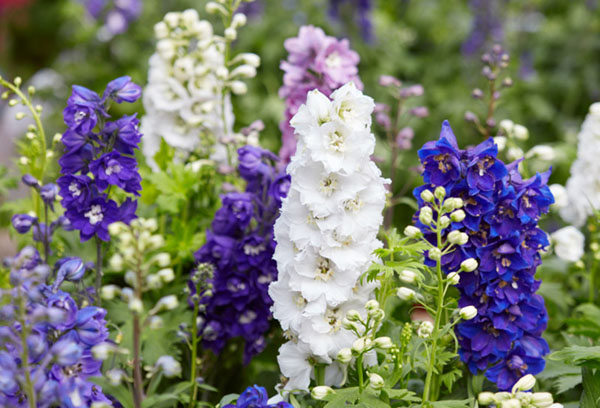
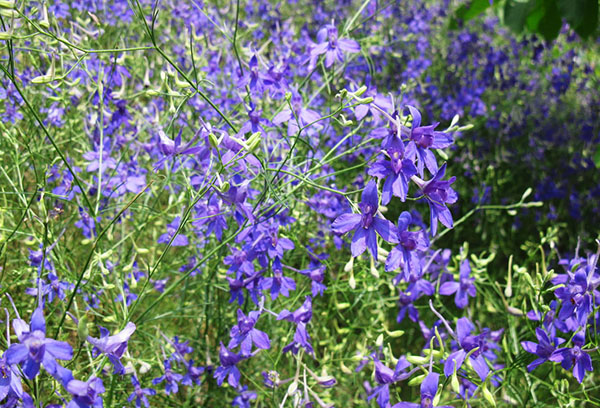
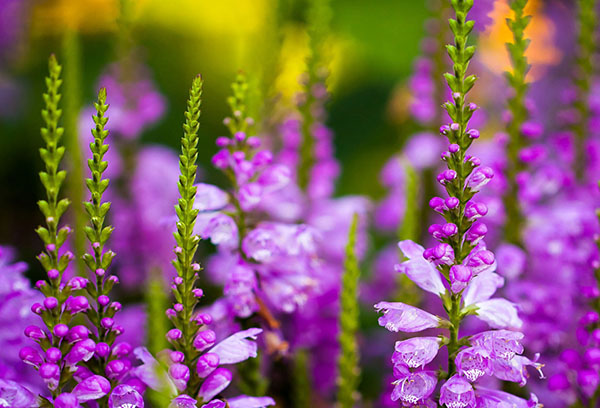
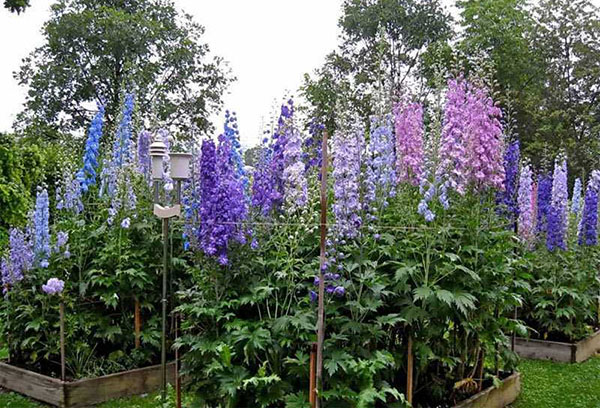
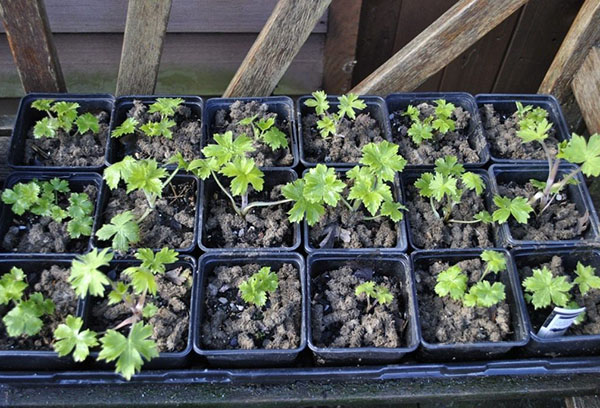
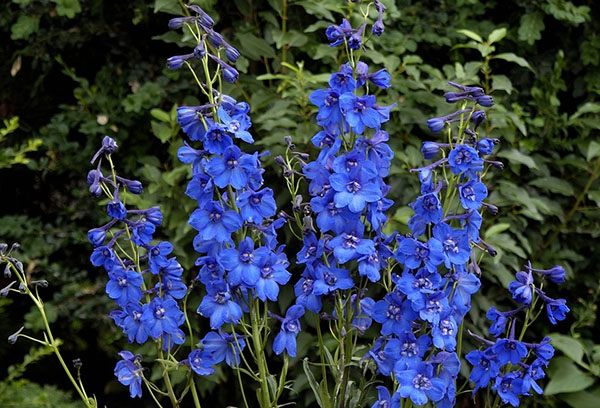
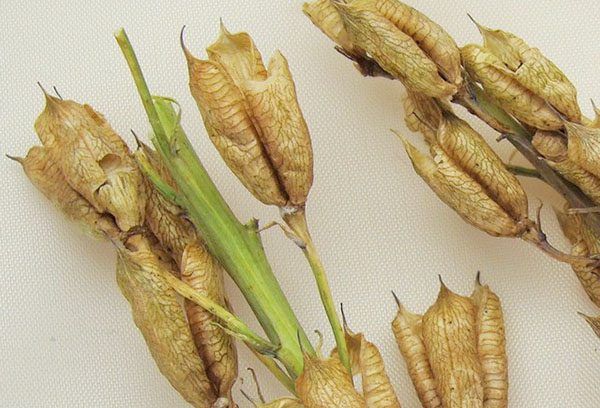
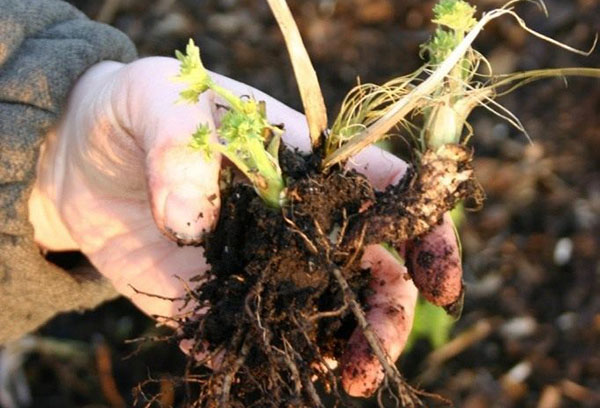
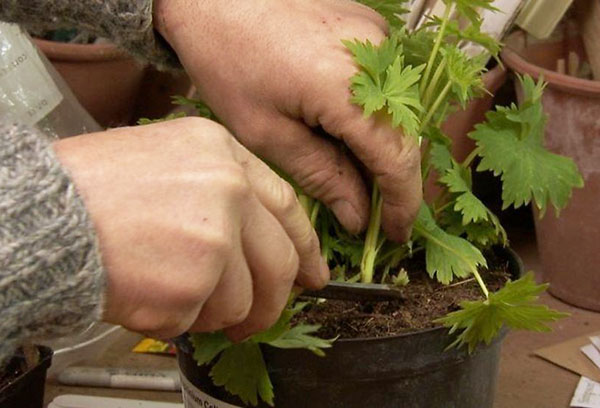
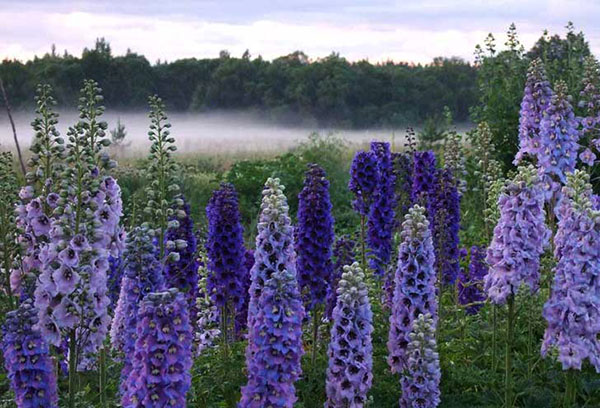
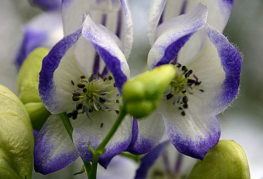
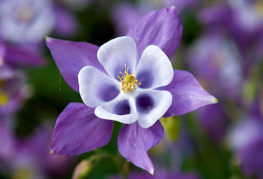
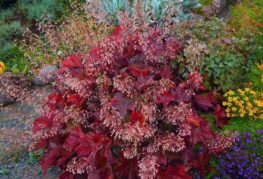
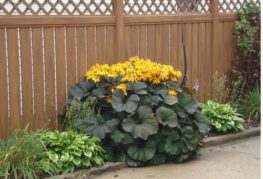
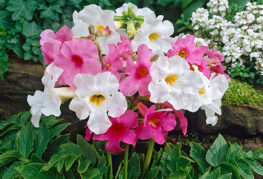
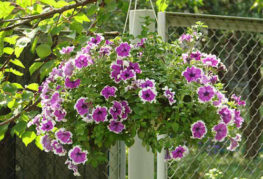
and will be published shortly.